-
Posts
1,212 -
Joined
-
Last visited
Content Type
Profiles
Forums
Events
Blogs
Gallery
Everything posted by Gregg From Keystone Sewing
-

Help - Juki 562/563 oil felt wick
Gregg From Keystone Sewing replied to Vinito's topic in Leather Sewing Machines
Nice find!! -
1. Most E1 error messages occur because of unstable power being supplied to the motor. • Release the pedal when the E1 error message occurs, then push down again to activate the motor. If the E1 error message no longer appears this was a False error due to unstable power. 2. If the E1 error message continues to appear: • Replace the motor circuit board with a new motor circuit board. Like Wiz said, the Family FESM-550S is very good motor...we no longer offer the Enduro for a reason.
-

Bernina 217n-8 adding roller puller
Gregg From Keystone Sewing replied to Josacraw's topic in Leather Sewing Machines
$400 dollars is a very low price for a factory puller, especially for the quality. IMCA Global Minerva makes their own machines and parts, they make the 217N Copy. -
Philly in da house!
-

My chinese cobbler patcher arrived
Gregg From Keystone Sewing replied to Yankee63's topic in Leather Sewing Machines
I've seen some popular reviews on this machine. They are interesting to say the least. -

Drop down edge guide for CB 4500
Gregg From Keystone Sewing replied to Hildebrand's topic in Leather Sewing Machines
I'm not sure, but this appears to be the bracket with hardware used to mount a swing guide. Usually the bracket mounting screws in the casting are 6X1mm set screws. Again, I'm not sure about any of this, but this is where I would start. -

tension issue only in one direction
Gregg From Keystone Sewing replied to Gregspitz's topic in Leather Sewing Machines
Make sure that the tensions are set to give you a balanced stitch. Sew enough for a good sewn sample then cut apart the goods in the middle, say, four layers, in between the 2nd and the 3rd layers. If the interlocking knot is not there, adjust the tension so that it is. This should help provide a stronger stitch, and should do a much better job to hide knots top or bottom. -

Juki DLN 9010A-SH Tension Problem
Gregg From Keystone Sewing replied to Bilbrey09's topic in Leather Sewing Machines
As a test, sew slowly, then to a stop, and then go into reverse. See if that improves it. Often, on full function machines, the bobbin comes to an abrupt start and stop, and can over spin the bobbin. I would still check the timing. Usually when things are going well in forward but not in reverse, it's a timing issue. CLICK HERE FOR DLN-9010A Books -

Rebirth Of A Singer 211G155
Gregg From Keystone Sewing replied to gottaknow's topic in Leather Sewing Machines
I missed this one, I'll circle back when I have more time to dig in. -
Mitsubishi DU-105, old world Japan quality on par with Juki and Seiko. It's actually a really good machine. 135X17 needle, same large bobbin as Juki LU-563, popular Singer walking feet same as 111W155 or Consew 206RB. See attached owners manual. Mitsubishi DU-100, -120 Instruction Manual.pdf
-

Consew 206rb-2 help
Gregg From Keystone Sewing replied to EllenFox's topic in Leather Sewing Machines
This machine never had a needle clamp, only a set screw for the needle. Missing are the needle bar thread guide, 10533 see attached image, and the needle bar thread guide set screw. The needle set screw, that is correct in the needle bar, goes through the needle bar thread guide. 10535 is the needle set screw, and again appears correct. If the needle bar does not hole this screw, get a new one and see if the needle bar threads are blown out, and then it's time for a new needle bar complete. It's not uncommon. -

Consew Model 229
Gregg From Keystone Sewing replied to oldfarmboy's topic in Leather Sewing Machines
That's a reasonable price for this bobbin case cap from the prices I'm finding, see attached image, this is what it looks like. That old Seiko machine looks like it was hardly used at all. -

Correct Bobbin Case Size for Thor GC-1541s
Gregg From Keystone Sewing replied to rchaven's topic in Leather Sewing Machines
If you go to the manufacture web site say for Koban, Hirose or Cerliani and start to cross reference you will see that a MFG # falls under many many factory machine models and part numbers. Often the same mfg. will use a different part number for the same MFG # part to add to the confusion, even in this case no pun intended. -
Hirose MFG # HSH-12-40 is for Singer model 112W140 and maybe others, Singer part number for the hook base with bobbin case complete is 236083. The hook driving shaft has a V ditch where the driving pinion gear set screw would fall on to, and should have a ball point screw. Some gears have an S stamped next to this set screw hole. Taking the hook out of the machine is one way to do it, but if you turn the hand wheel over in a sewing motion, the first set screw that comes to you can be removed, and the second set screw can be tight as to not disrupt the timing, and then we can look down into the hole for a V ditch, a flash light helps if you have even good lighting.
-

"Vintage equivalent" of Juki 1541?
Gregg From Keystone Sewing replied to SouthernCross's topic in Leather Sewing Machines
The predecessor Juki, DNU-241 series. -

Poor Quality Consew Parts from China?
Gregg From Keystone Sewing replied to Jocker's topic in Leather Sewing Machines
If you can swing it, and want top quality Japan go with an LU-1508N. Same setup as your 226R, same presser feet and needles, same feed and plate. Larger bobbin top load like your 226R, and has higher foot lift, longer stitch length and larger bobbin size. Like you said, a lot of machines are not what they used to be regardless of brand names. If you really want, why not find another used 226R out there? -

Juki 1541S vs. Thor 1541S
Gregg From Keystone Sewing replied to onathread's topic in Leather Sewing Machines
I've always said, if you want to learn something new on the internet, post the incorrect information and people will flock to you to make corrections. Hopefully this is the 1st and last time I get involved with comparison shopping online for sewing machines. Their machine at this time is $1,395 complete store walk in ready to sew, ours is current at $1,600. They want $170 for reducer, we ask $115 additional for SR-2 and Family FESM-550S motor. I'm sure theirs is comparable setup that's good and works well. Commercial Van line freight to business or commercial address, us $125 vs $170. Van line freight is NOT set in stone, and things can change quickly, so this number can be misleading with a number of factors like multiple machines, various van line services and the like. So, again, the price difference is for machines with motors and speed reducers shipped to a business for ours $1,840 and less money for theirs at $1,714 But, the problem here is that this is not an apples to apples comparison. See the image below, one is a Jaguar, the other is not. Kia copied the body type of the Jaguar, but that does not make the Kia a Jaguar. Just like the Juki; one is made in Japan by the second largest sewing machine manufacturer in the world, the other is not. -
Ho Hsing IMO is very good quality. Service and support is strong within the US, and in rare cases that I needed to contact Ho Hsing about technical support, they were very helpful and supportive and took my issues seriously. English to my benefit is also a strong suit of theirs, no problem communicating back and forth via email. On thing is that a LOT of their product line is geared toward high speed garment machines and some canvas upholstery type. They have a few motors that are specific for high torque applications, but I prefer to move to something else for that in most any case. For example, on a high speed overlock, a Ho Hsing motor may be awesome, but terrible for low speed, low torque applications like most folks want to do here, not so great.
-
Efka, Ho Hsing, Mitsubishi have a 24V output, that when you heel back on the foot treadle, position D or E, it will lift the foot with the needle in the work with the foot lift or up, and full heel back with needle up and foot lift output. Usually we would use a solenoid to control the air lifting cylinder or magnetic solenoid for foot lift. With the EB401 control arm as just one example, it's easy to setup the foot pedal for toe down and heel back. Another way as mentioned by shoepatcher calling it an air assisted pitman rod (good enough for me) is to use the heel action mechanical switch that goes between the motor control arm and foot treadle. Heel back with actuate the switch and activate the air cylinder for foot lift. Likewise, we can add for example toe down switch for motor running with compressed air needle cooler if we wanted to.
-

Consew 206RB upgraded the knee lift bell crank
Gregg From Keystone Sewing replied to JJN's topic in Leather Sewing Machines
This bell crank type comes standard on the 206RB-3 and up, and should provide 9/16" foot lift using the knee lifter when everything is adjusted correctly. Also...I've been using this knee lifter and bell crank setup on Pfaff 145 and 545 rebuilds here and there. Direct bolt on bell crank with no mods, other than maybe grinding down the non working part of the top of the crank that may hit the bed of the machine a bit too soon, but very little to get the action needed. Old Pfaff set screw and everything line up great and it's, for me, a lot easier to adjust well compared to the Pfaff factory bell crank and knee lifter setup. Of course, the 206RB type knee lifter would have to be used here as well for the Pfaff setup that I'm talking about. BTW keep at least the old bell crank spring on hand, they do break from time to time and you never know when you may need it. -
Singer 7-33 is the machine most related to the Consew 733R series and the Seiko SLH-2B series, but these too have some parts that differ from the Singer. A lot are the same, too. However, the 7-55 is an odd duck, not sure about parts or anything, never had that machine in here for service.
-
Jack sewing machines? They are only the largest current manufacturer of industrial sewing machines in the world, just recently overtaking Juki.
-
Seiko STW-8B also known as Consew 226 was made over the years by Seiko with three different castings, no idea how old the one you are asking about is without images and or a serial number. The first model had a clunky reverse mechanism that was quickly upgraded. All were at least decent or very good quality.



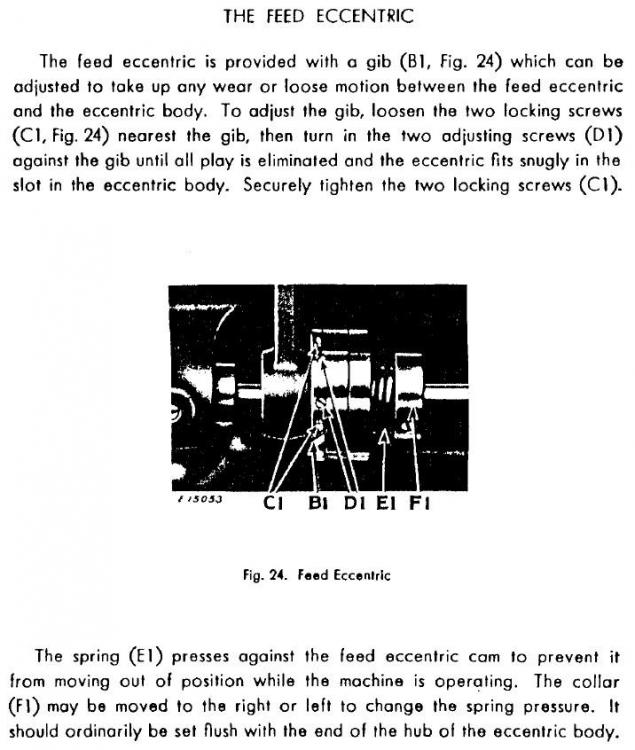

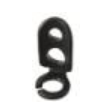
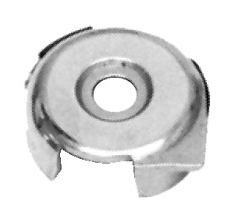


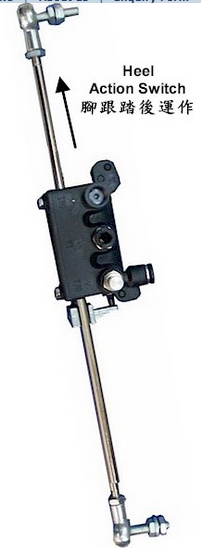
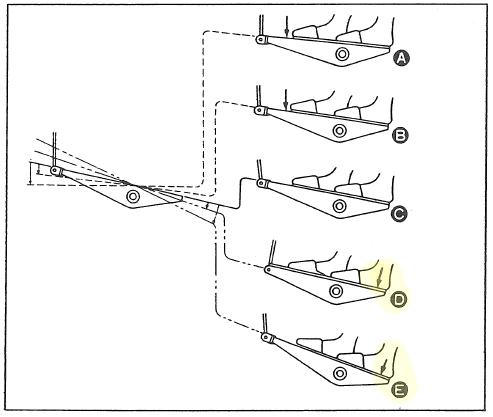
.png.901969da2d5c83f959e478758f8dc58d.png)
